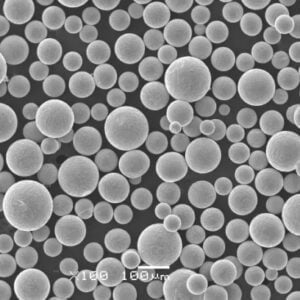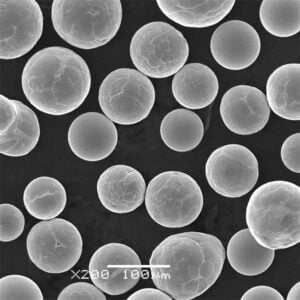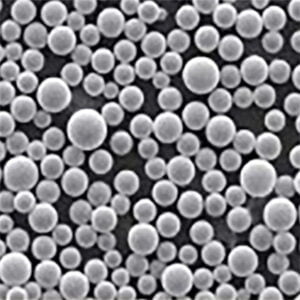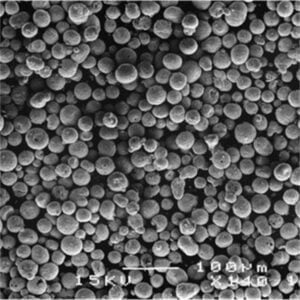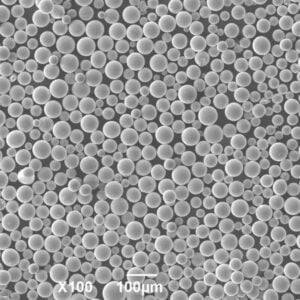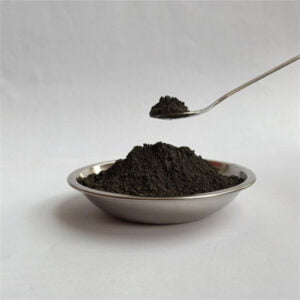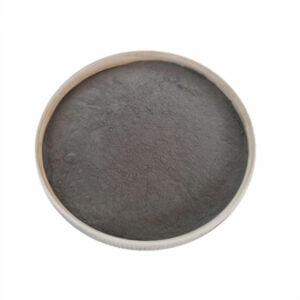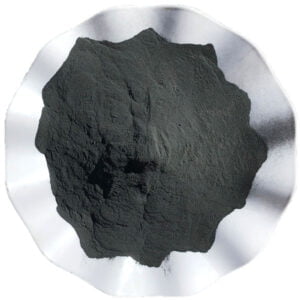モリブデンパウダー
目次
概要 モリブデン粉
モリブデンパウダーは、様々な冶金、電子、化学、工業用途に使用される粉末状の微細なモリブデン粒子を指します。モリブデンは、高融点、高温強度、耐食性、熱伝導性などのユニークな特性を持っており、特殊な用途に適しています。
モリブデンパウダーの主な詳細:
- 純モリブデンまたは他の金属とのモリブデン合金
- 主な用途は、冶金、エレクトロニクス、化学、潤滑油など。
- プロセスに応じて99.5%から99.9999%の高純度レベル
- 1ミクロンから150ミクロンまでの粒子サイズ
- 複数の製造方法で異なる特性が得られる
- 熱伝導率のような特性は、業界を超えて活用される
- 価格は純度、サイズ、購入量によって異なる。
モリブデン粉末は、金属合金、エレクトロニクス、化学薬品、潤滑剤、顔料などにおいて、世界的に重要な材料となっている。
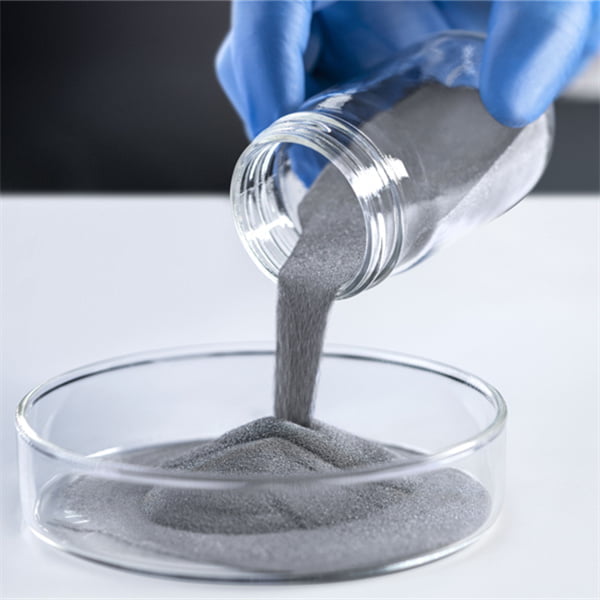
モリブデン粉末組成物
モリブデン粉末は、純粋なモリブデンから、他の元素と組み合わせて合金粉末を形成するものまで、さまざまな組成で入手できる。
純モリブデン粉末
モリブデンの含有量は99.5%純度以上で、不純物は少ない。
モリブデン合金粉末
| 合金 | 典型的な構成 |
|---|---|
| モクー | Mo 97%、Cu 3% |
| Mo-La2O3 | Mo 60-70%、La2O3 30-40% |
| モ・ニ | Mo 40-60%, Ni 40-60% |
| モ-チック | Mo 70-80%、TiC 20-30% |
| Mo-TiB2 | Mo 60-80%, TiB2 20-40% |
| モーW | Mo 40-60%、W 40-60% |
これらの粉末合金は、モリブデンと他の元素の複合特性を活用し、電子機器などの特定の用途で性能を向上させる。
モリブデン粉末の特性
モリブデン粉末は、化学的、電気的、熱的、機械的特性のユニークな組み合わせを提供します:
| プロパティ | 代表値 |
|---|---|
| 密度 | 10.2 g/cc |
| 融点 | 2,623°C |
| 熱伝導率 | 138 W/m-K |
| 電気抵抗率 | 5.5 μΩ-cm |
| 熱膨張係数 | 5.3 μm/m-°C |
| 最高使用温度 | 1,600-2,000°C |
その高温強度、耐食性、熱伝導性などの特性は、過酷な条件下での性能が必要とされる場合に有利となる。
モリブデン粉末の特性に影響を与える主な要因には、以下のようなものがある:
- 純度グレード - 電気的、化学的、機械的特性に直接影響する
- 粒子径 - サイズが小さいほど表面積の体積比が大きくなり、化学反応性が高まる。
- 製造工程 - 形態、内部気孔率、微細構造を決定する
- 合金元素 - 特定の熱的、電気的、レオロジー的特性を達成するために調整される。
モリブデン粉末の組成と粉末冶金技術の制御により、お客様の用途に合わせた特性の最適化とカスタマイズが可能です。
モリブデン粉末の用途
モリブデン粉末の主な用途には、以下のようなものがある:
冶金添加剤
- ステンレス鋼の合金成分で、耐食性および高強度。
- 工具鋼の焼入れ性、靭性、強度を向上させる。
- 航空機エンジン用ニッケル・クロム超合金に添加
電子・電気
- 電子エミッターとカソードに利用される高い通電容量
- 先端セラミックコンデンサー、合金鉄、太陽電池接点部品
顔料、触媒、化学品
- 顔料や触媒として使用される酸化モリブデンの前駆体
- 潤滑油添加剤、染料、有機合成、脱硫などの試薬。
コーティングと接合
- 高温溶接用ろう材として使用
- 溶射保護膜やメタライゼーション層への応用
耐熱性、導電性、その他の有用な特性により、モリブデンは高性能製品や先端技術に不可欠なものとなっている。
モリブデンパウダー仕様
工業用に市販されているモリブデン粉末は、規格によって等級が分かれている:
| パラメータ | 典型的な範囲 |
|---|---|
| 純度 | 99.5%〜99.9999% |
| 粒子径 | 1~150ミクロン |
| 形 | 不規則、球形 |
| 見かけ密度 | 2~6 g/cc |
| タップ密度 | 4~10 g/cc |
ASTM(American Society for Testing and Materials:米国材料試験協会)は、積層造形用途の基準規格を定めている:
| スタンダード | 項目 | 基準 |
|---|---|---|
| ASTM B781 | 化学組成 | 元素含有率 |
| ASTM B783 | 粒子径の分類 | ミクロンとメッシュの範囲 |
| ASTM B809 | 球状粉末仕様 | 純度、粒度分布、見かけ密度 |
これらは、品質指標を定義し、購入者がミッションクリティカルな用途に適したモリブデン粉末を入手できるようにするのに役立ちます。粒子寸法、粒度分布の収率、形状の均一性、表面積、嵩密度、不純物等級は、信頼できる製造業者との合意によりカスタム可能です。
モリブデンパウダー メーカーと価格
純モリブデンとモリブデン合金の粉末を商業用に供給している世界的な特殊金属メーカーがいくつかある。主なサプライヤーは以下の通りである:
| 会社概要 | 本社 |
|---|---|
| H.C.スタルク | ドイツ |
| プランゼーグループ | オーストリア |
| エクスプロイター モリブデン | 中国 |
| 中国モリブデン有限公司 | 中国 |
| モリメット | チリ |
| JDCモリ | 韓国 |
モリブデン粉末のコスト表示
| 純度 | メッシュサイズ | kgあたりの価格 |
|---|---|---|
| 99% | -325メッシュ | $40 – $55 |
| 99.5% | 1~5ミクロン | $70 – $90 |
| 99.9% | 10-50ミクロン | $100 – $140 |
| 99.95% | 球形 <45 μm | $140 – $170 |
最終的な価格設定は、正確な材料グレード、粒子特性、注文量、サプライチェーンロジスティクス、および市況によって異なります。粉末冶金グレードの球状モリブデンは、高純度で粒度分布が制御されており、重要な用途に必要なため、プレミアム価格が要求されます。
モリブデンパウダー使用の長所と短所
ここでは、モリブデンパウダーのメリットとデメリットを比較してみよう:
メリット
- 2000℃を超える高温での優れた強度
- 寸法安定性のための低熱膨張係数
- ヒートシンク用の高い熱伝導性と電気伝導性
- 極めて高い耐食性
- 合金の組み合わせによる機械的特性の調整
- プレスと焼結によるネットシェイプ部品加工の簡素化
デメリット
- 代替オプションより比較的高価
- 摩擦接点の表面処理が必要な低硬度と耐摩耗性
- 加工温度が高くなると酸素汚染の影響を受けやすい。
- 冶金的圧密には不活性雰囲気または真空が必要
- 鋼鉄に比べて加工性が劣る。
- 広範な冷間成形作業には延性が不足している。
熱安定性、耐薬品性、電気的特性が重要なニッチな用途では、モリブデンはタングステンやタンタルのような代替品よりも優れており、その差別化された性能のために高い基本価格を相殺する。
モリブデンパウダーとモリブデンシートの比較
モリブデンパウダーは、モリブデンシート、ロッド、ワイヤーに比べ、製造および特性において特定の利点を提供します:
主な違い
| パラメータ | モリブデンパウダー | モリブデンシート/ロッド |
|---|---|---|
| 製造方法 | 噴霧化と粉砕 | 鋳造と圧延 |
| サイズと形状のコントロール | 素晴らしい | 限定 |
| 寸法公差 | タイト | より広い |
| 表面仕上げ | ファインマット | 滑らかな光沢 |
| 機械的特性 | 等方性細粒 | 異方性の粗い |
| ネットシェイプ機能 | 非常に優れた焼結部品 | 大規模な機械加工が必要 |
| 経済学 | 材料利用率の低下 | 原料効率の向上 |
モリブデン粉末を最終寸法に極めて近い高性能部品にプレス・焼結する能力と、カスタマイズされた粉末特性に関する柔軟性により、モリブデン粉末は多くの機能的・構造的部品のニーズにとって魅力的なものとなっている。
モリブデン粉末による溶射
高速オキシ燃料(HVOF)、プラズマ、アーク溶射などの溶射技術は、溶融または半溶融モリブデン粉末を部品に付着させ、密着性の高い保護皮膜を形成するために使用されます。
モリブデン金属スプレーの利点:
- 摩擦面および荷重支持面の耐摩耗性
- 電気および熱伝導性表面層
- 化学処理装置の腐食保護
- ビルドアップによる磨耗部品の寸法復元
モリブデン粉末の一般的なスプレーパラメータ:
| パラメータ | 典型的な範囲 |
|---|---|
| 粒子径 | 10~45ミクロン |
| 蒸着効率 | 50 – 70% |
| コーティングの厚さ | 50~500ミクロン |
| マイクロハードネス | 350 - 600 HV |
| ボンド強度 | > 69 MPa |
| 動作温度 | 120°C~260°C |
モリブデン・コーティングは、卓越したトライボロジー特性により、石油・ガスバルブ、航空宇宙用シール、自動車用ベアリング、プラスチック押出バレル、コネクターの電気接点などで広く活用されている。
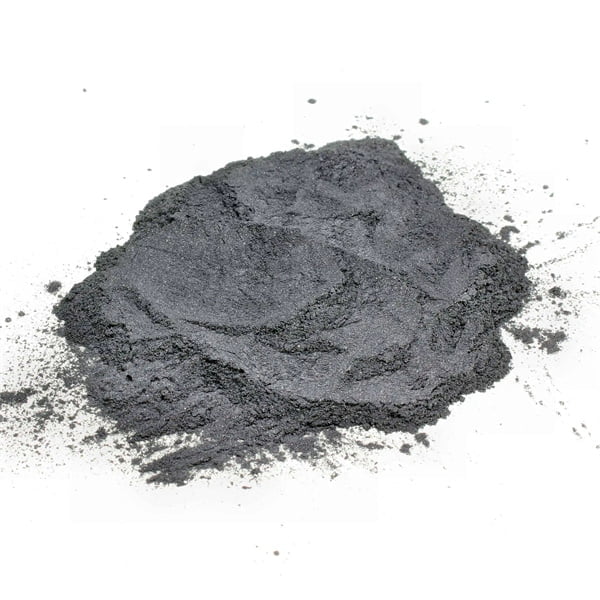
よくあるご質問
Q: モリブデン粉はどのような産業で使用されていますか?
A: 主な最終用途分野は、冶金、エレクトロニクス、触媒、航空宇宙、エネルギー、コーティング、化学品で、高温強度、熱伝導率、電気抵抗率、耐食性などの特性を活用している。
Q:モリブデン粉末を使った部品製造には、どのような工程がありますか?
A: 主な技法は、粉末プレスの後に無加圧焼結または加圧焼結を行うものです。粉末射出成形や積層造形も、複雑な形状のために登場してきています。
Q: モリブデン粉末の品質に影響を与える一般的な汚染物質は何ですか?
A: 酸素、炭素、硫黄、塩素は、エレクトロニクスのような高い化学純度が要求される用途において、実用性を損なう有害な不純物です。製造時の厳しい工程管理が重要です。
Q: モリブデンパウダーは特別な取り扱いが必要ですか?
A: 加工時の高温で酸化しやすい高純度微粉末には、不活性ガスブランケット、真空包装、低湿度保管が必要です。
Q: モリブデンパウダーを使ってどのようなコーティングができますか?
A: 純粋なモリブデンの他に、Mo-Cu、Mo-NiCrBSi、Mo-NiCrFeSiBや、モリブデンを含むニッケルやコバルトクロムマトリックスとブレンドされたカーバイドコーティングのような複合バリエーションは、強化された機能特性を提供します。
Q: モリブデン粉の特性評価に役立つ試験方法にはどのようなものがありますか?
A: 化学分析では、ICP-MS、蛍光X線分析、LECO分析などの手法により、組成の純度レベルを検証します。粒度分布、形状係数、見かけ密度、タップ密度などの物理的属性は、粉末の形態を最適化するのに役立ちます。
結論
モリブデン金属粉末は、そのユニークな電気的、熱的、機械的特性により、差別化された性能を発揮し、航空宇宙エンジン、電子機器、炉部品、金属合金など、過酷な条件下での信頼性が重要な用途に不可欠です。
特定の最終用途に合わせて、粒子寸法、粒度分布分率、形状、密度パラメーター、微細構造を精密に設計した、より純度の高い組成物を開発し続けることで、より多くの分野と技術で有用性が拡大する。
強化された製造方法と業界の旺盛な需要が相まって、ファイン部門は確固たる地位を築いている。 モリブデン粉 この素材の特徴的な能力により、長期的に力強い成長が見込まれる。
シェアする
MET3DP Technology Co., LTDは、中国青島に本社を置く積層造形ソリューションのリーディングプロバイダーです。弊社は3Dプリンティング装置と工業用途の高性能金属粉末を専門としています。
関連記事
Met3DPについて
最新情報
製品

3Dプリンティングと積層造形用金属粉末






